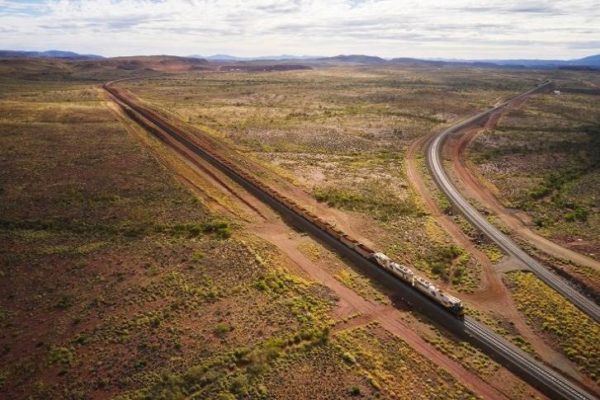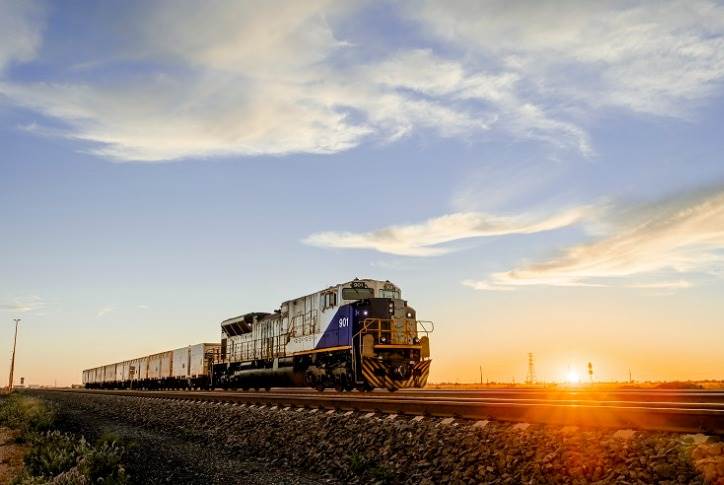Iron ore major Fortescue has announced plans to spend almost $70 million over the next two years to develop the world’s first Infinity Train which it said would fully recharge its battery using gravitational energy generated on the downhill sections of the miner’s rail network.
The train will be developed in collaboration with Williams Advanced Engineering (WAE), the UK-based offshoot of the Williams Formula 1 motorsport team famous for its initiatives in high-performance battery systems and electrification.
Fortescue acquired WAE for $310 million in January. The acquisition was completed on Wednesday.
WAE is set to remain an independent company to accelerate its growth, while its battery technology division will be closely coordinated with Fortescue. Both will be managed by Fortescue’s green energy, technology and development company Fortescue Future Industries (FFI).
To mark the settlement of the acquisition, Fortescue and WAE have announced plans to develop what it said would be the world’s first zero emission train.
The regenerating battery electric iron ore train project will use gravitational energy to fully recharge its battery electric systems without any additional charging requirements for the return trip to reload.
“The Infinity Train has the capacity to be the world’s most efficient battery electric locomotive,” Fortescue chief executive officer Elizabeth Gaines said.
“The regeneration of electricity on the downhill loaded sections will remove the need for the installation of renewable energy generation and recharging infrastructure, making it a capital efficient solution for eliminating diesel and emissions from our rail operations.”
Fortescue’s current rail operations include 54 operating locomotives and consumed 82 million litres of diesel in the 2021 financial year, accounting for 11% of the company’s Scope 1 emissions.

Image: FMG
The company said this diesel consumption and associated emissions will be eliminated once the Infinity Train is fully implemented across Fortescue’s operations, significantly contributing to Fortescue’s target to be diesel free by 2030.
Fortescue founder Andrew Forrest said the Infinity Train will not only support the company’s ambition to reach net zero emissions by the end of the decade, but would also lower the company’s operating costs, create maintenance efficiencies and productivity opportunities.
Forrest also expects there will significant opportunities for the gravity energy technology to be commercialised on a global basis.
“The Infinity Train will join Fortescue’s green fleet under development and will contribute to Fortescue becoming a major player in the growing global market for green industrial transport equipment,” he said.
“The commercial opportunities are obvious for FFI as it pioneers this technology, captures its value and distributes it globally. Less obvious, is that we have an opportunity to not only lower our operating costs, eliminate the cost of diesel from our company but of course eliminate our rail system carbon emissions.”
Fortescue said its studies and development costs for the Infinity Train are expected to be almost $70 million (US$50 million) over the next two years.
WAE chief executive Craig Wilson said the project, which includes the design and construction of a bespoke battery electric powertrain, provides the company with an opportunity to help reduce emissions in the hard-to-abate heavy industry sector.
“High-performance battery and electrification systems are at the core of what we do and now that we are part of the Fortescue family, this presents an exciting opportunity to develop new technologies as we work together to tackle climate change,” he said.
The announcement of the Infinity Train project follows Fortescue’s recent purchase of two 14.5MWh electric trains from Progress Rail, owned by mining and construction equipment giant Caterpillar.
This content is protected by copyright and may not be reused. If you want to cooperate with us and would like to reuse some of our content, please contact: editors@pv-magazine.com.









3 comments
By submitting this form you agree to pv magazine using your data for the purposes of publishing your comment.
Your personal data will only be disclosed or otherwise transmitted to third parties for the purposes of spam filtering or if this is necessary for technical maintenance of the website. Any other transfer to third parties will not take place unless this is justified on the basis of applicable data protection regulations or if pv magazine is legally obliged to do so.
You may revoke this consent at any time with effect for the future, in which case your personal data will be deleted immediately. Otherwise, your data will be deleted if pv magazine has processed your request or the purpose of data storage is fulfilled.
Further information on data privacy can be found in our Data Protection Policy.